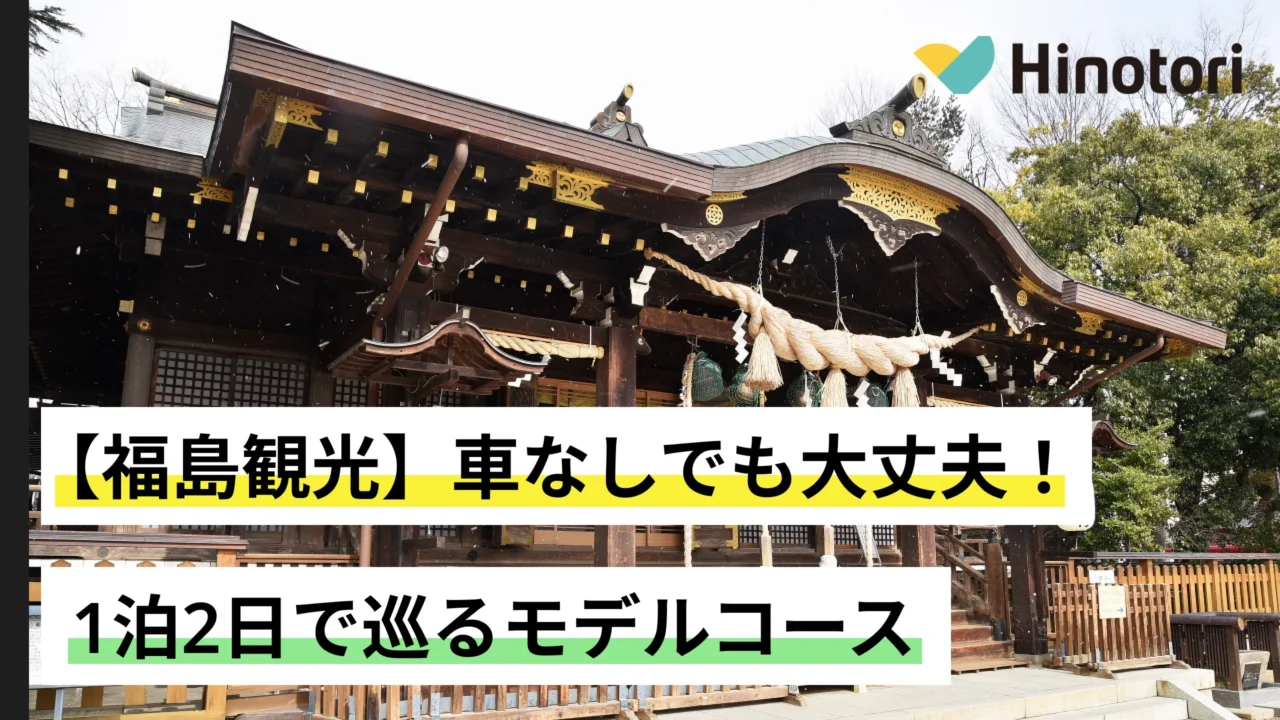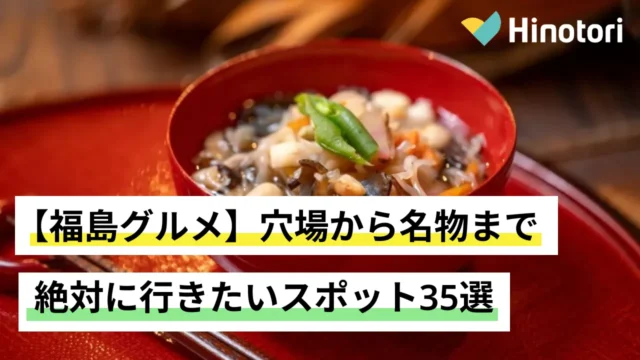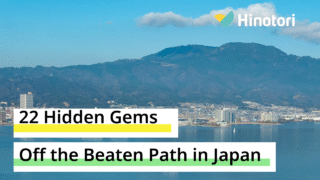Fukushima Prefecture is a destination rich in natural beauty and historical charm. Even without a car, a 2-day, 1-night trip can be thoroughly enjoyed by using trains and buses. This article introduces a car-free model itinerary that takes you around the Fukushima Station area, scenic spots, and hot spring towns. The plan is packed with highlights, including the breathtaking views of Hanamiyama Park and Goshikinuma, historical sites in Aizuwakamatsu, and mouthwatering local cuisine. With detailed tips on efficient transportation and recommended routes, this guide is perfect for planning your next trip!
- A 2-Day, 1-Night Car-Free Model Itinerary for Exploring Fukushima
- [Day 1] Exploring the Area Around Fukushima Station & Scenic Nature Spots
- Highlights Near Fukushima Station: Fukushima Inari Shrine & Yuji Koseki Memorial Hall
- Seasonal Beauty at Hanamiyama Park: Cherry Blossoms in Spring & Colorful Foliage in Fall
- A Hike Through Nature’s Colors: The Goshikinuma Ponds in Urabandai
- Delicious Local Cuisine! Enjoy a Kitakata Ramen Lunch (Bannai Shokudo, Makoto Shokudo, etc.)
- Where to Stay in Fukushima: Onsen Ryokan or City Hotel?
- [Day 2] A Day of Hot Springs, History, and Culture in Fukushima
- Tips for Making the Most of Your Trip to Fukushima
- Summary: A 2-Day Fukushima Trip You Can Fully Enjoy Without a Car
A 2-Day, 1-Night Car-Free Model Itinerary for Exploring Fukushima
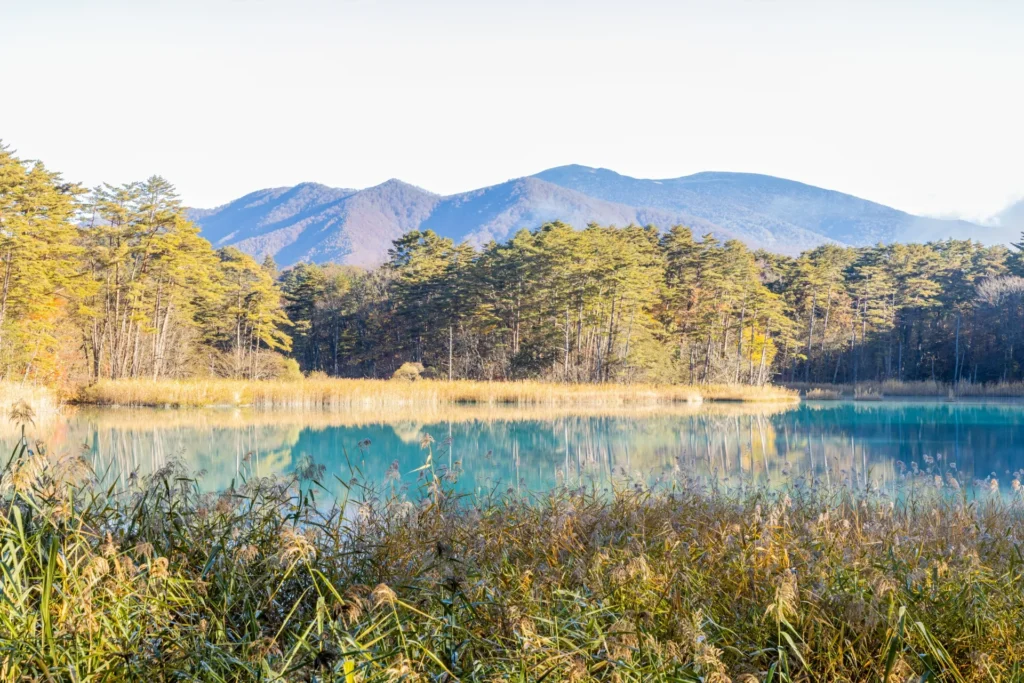
Fukushima Prefecture is a travel destination filled with natural beauty and historical charm. Even without a car, it’s entirely possible to enjoy a fulfilling 2-day, 1-night trip by using public transportation. Starting from Fukushima Station, trains and buses can be used efficiently to visit a variety of sightseeing spots. In particular, areas like Fukushima City, Aizuwakamatsu, and Urabandai offer a wealth of attractions.
Fukushima’s appeal lies in its stunning seasonal landscapes, historic landmarks, and delicious local cuisine. In spring, cherry blossoms bloom at Hanamiyama Park, while in autumn, the vibrant foliage paints the region in rich colors—each season brings a different kind of beauty. Historical sites like Tsurugajo Castle in Aizuwakamatsu and the traditional village of Ouchi-juku offer opportunities to experience the region’s deep cultural heritage.
Fukushima is also known for its relaxing hot spring areas, many of which offer day-use bathing options—perfect for soothing travel fatigue. With convenient public transport, getting around is easy and stress-free. Be sure to check out the model itinerary below and discover the many charms that Fukushima has to offer.
The Charm of Traveling in Fukushima: Why It’s Perfect Even Without a Car
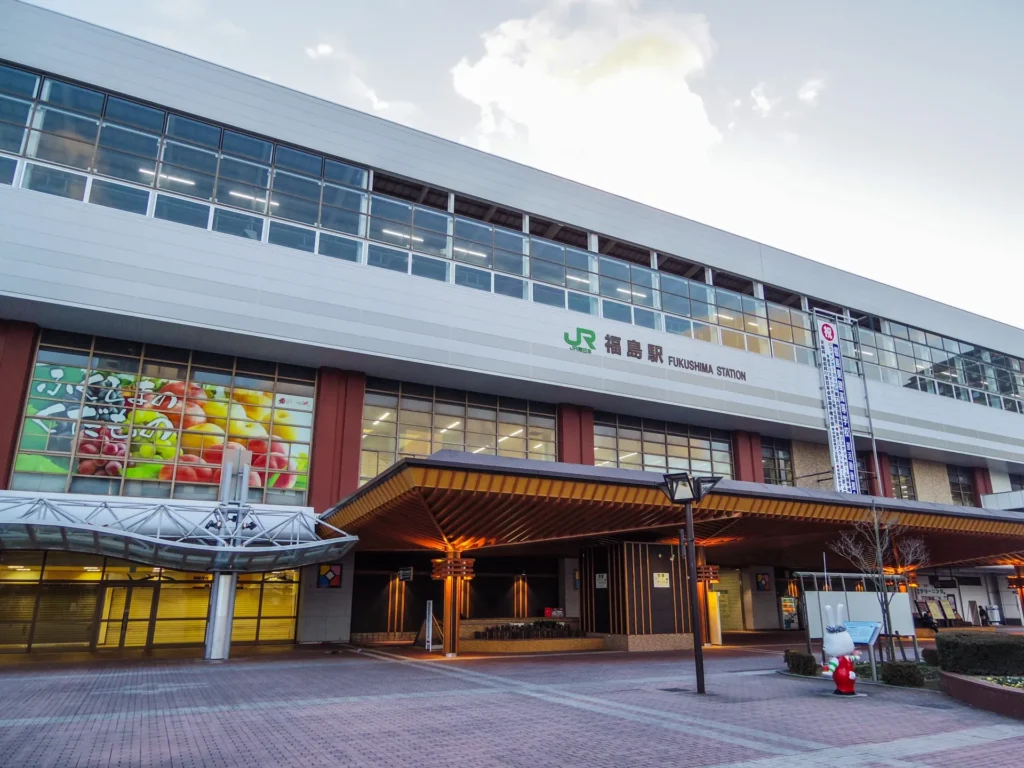
Fukushima Prefecture is a destination full of natural beauty and historical appeal. Even without a car, it’s easy to explore the region by using public transportation. Starting from Fukushima Station gives travelers convenient access to many surrounding attractions. With frequent train and bus services, getting around is smooth and efficient.
Another reason Fukushima is so enjoyable without a car is how walkable and bike-friendly many of its tourist areas are. For example, within walking distance of Fukushima Station, you’ll find spots like Fukushima Inari Shrine and the Koseki Yuji Memorial Hall. Strolling between sights allows visitors to experience the local atmosphere at a relaxed pace.
Fukushima’s appeal lies not only in its ease of access, but also in its stunning natural scenery throughout the seasons. Hanamiyama Park and the Goshikinuma Ponds, for instance, are accessible via public transportation and offer spectacular views. These spots are well worth a visit without a car, especially in spring for cherry blossoms or in autumn for the vibrant foliage.
But sightseeing isn’t the only highlight—Fukushima is also home to delicious local food. Dishes like Kitakata Ramen and sauce katsudon are beloved regional specialties. Many restaurants serving these local flavors are conveniently located and easy to reach by train or bus.
As you can see, Fukushima is a destination that can be fully enjoyed without a car. By making smart use of public transportation, travelers can explore a wide variety of spots while experiencing the local culture and nature at their own pace. In the next section, we’ll introduce recommended transport options and routes to help you plan your trip.
Fukushima was easy to explore without a car—great public transport, beautiful spots like Hanamiyama Park, and delicious Kitakata Ramen!
Getting Around Fukushima by Public Transport: Trains, Buses, and Taxis
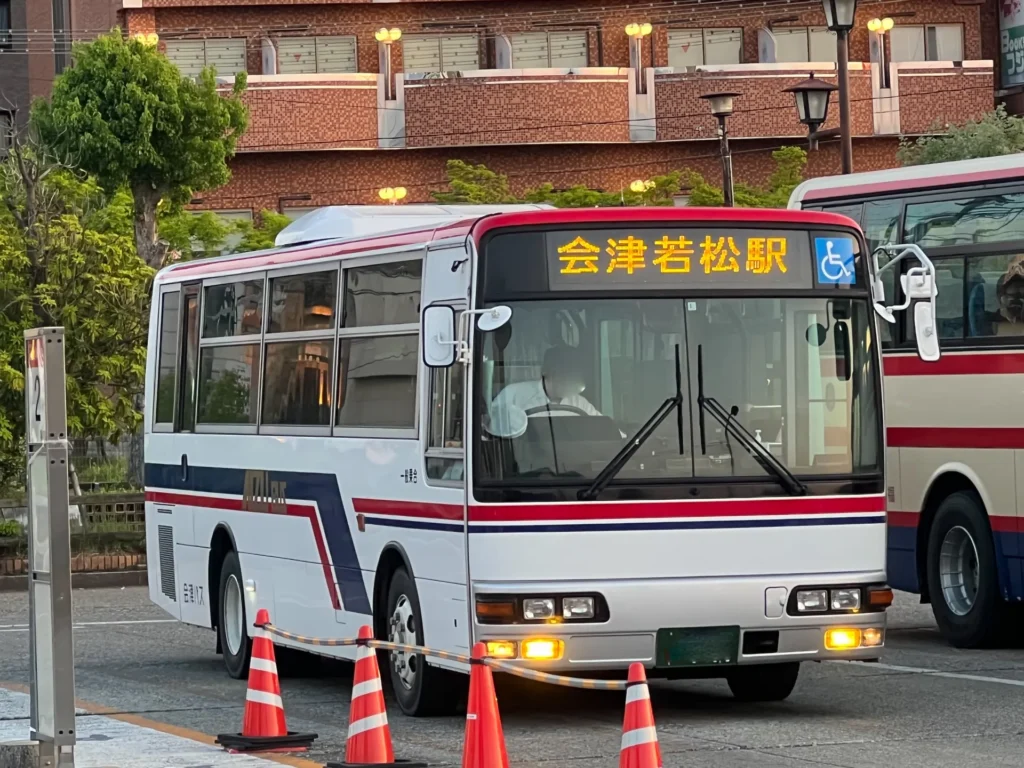
To make the most of your car-free journey through Fukushima, it’s essential to take advantage of the excellent public transport network. With convenient train and bus services available throughout the prefecture, accessing tourist sites is both easy and enjoyable. Below is a guide to getting around efficiently.
The best way to begin your journey is to use Fukushima Station as your main base. From here, you can get on the Tohoku Shinkansen or local lines, giving you access to many major destinations. Places like Aizuwakamatsu and Urabandai are comfortably reachable by train. In particular, the scenic route to Aizuwakamatsu offers a breathtaking journey that makes the travel itself part of the adventure.
Buses are another great option. A wide network of local and regional buses connects Fukushima City and surrounding areas, with many lines going directly to popular sightseeing spots. For places like Hanamiyama Park or Goshikinuma, dedicated sightseeing buses are especially convenient. Checking the schedule in advance will help your trip run smoothly. And don’t forget—the views from the bus window are a great way to enjoy Fukushima’s beautiful countryside.
Taxis are also worth considering. They’re particularly handy for getting between remote spots or when time is limited. There are many taxi companies in Fukushima City, and it’s easy to book a ride using smartphone apps. Taxi drivers often know local highlights and may offer insider tips on hidden gems.
By combining trains, buses, and taxis, you can enjoy a stress-free, well-rounded experience of Fukushima without needing a car. Take in the scenery during your ride and enjoy the freedom of travel at your own pace.
Public transport in Fukushima is smooth and scenic—perfect for a relaxing trip.
[Day 1] Exploring the Area Around Fukushima Station & Scenic Nature Spots

The first day of your Fukushima adventure begins around Fukushima Station. Start with a peaceful visit to Fukushima Inari Shrine, just a short walk from the station. Lined with vibrant torii gates and surrounded by a calm, spiritual atmosphere, it’s the perfect place to pause and take a breath. Next, head over to the Yuji Koseki Memorial Hall, dedicated to the renowned composer born in Fukushima. Discover his life and music as you explore the exhibits.
From there, get on public transport and make your way to Hanamiyama Park. A beloved local spot known for its seasonal beauty—cherry blossoms in spring, autumn blaze in autumn—it’s ideal for a relaxing stroll through nature.
Continue on to the Goshikinuma Ponds in the Urabandai area for a scenic hike. Famous for their mysteriously colored waters, these ponds are not only breathtaking to look at but also a favorite among photographers. After reconnecting with nature, treat yourself to a hearty bowl of Kitakata Ramen—try local favorites like Bannai Shokudo or Makoto Shokudo for a truly authentic taste.
Wrap up the day with a restful night’s stay. Whether you prefer the comfort of a city hotel or the serenity of a hot spring ryokan, there are great options to choose from. Recharge and get ready for more exploring tomorrow.
Those colorful ponds looked like spilled crayons—definitely the highlight of my trip!
Highlights Near Fukushima Station: Fukushima Inari Shrine & Yuji Koseki Memorial Hall

The area around Fukushima Station is packed with great spots to explore, even without a car. A must-visit is Fukushima Inari Shrine, just a 15-minute walk from the station. Adored by locals, this shrine is known for its rows of red torii gates and tranquil atmosphere. It’s a lovely place for a quiet stroll and seasonal scenery, changing beautifully throughout the year.
Another spot worth visiting is the Yuji Koseki Memorial Hall, about 20 minutes on foot from the station. This museum celebrates the legacy of one of Japan’s beloved composers. Through music-filled exhibits and displays of his life’s work, visitors can immerse themselves in both history and culture.
With most attractions within walking distance, you can easily enjoy this area on foot. Take a break at a nearby café or restaurant to sample some local flavors. This area is the perfect starting point for a 2-day trip to Fukushima.
Walked through endless red gates at Inari Shrine (felt like a ninja), then enjoyed music at Yuji Koseki Hall.
Seasonal Beauty at Hanamiyama Park: Cherry Blossoms in Spring & Colorful Foliage in Fall
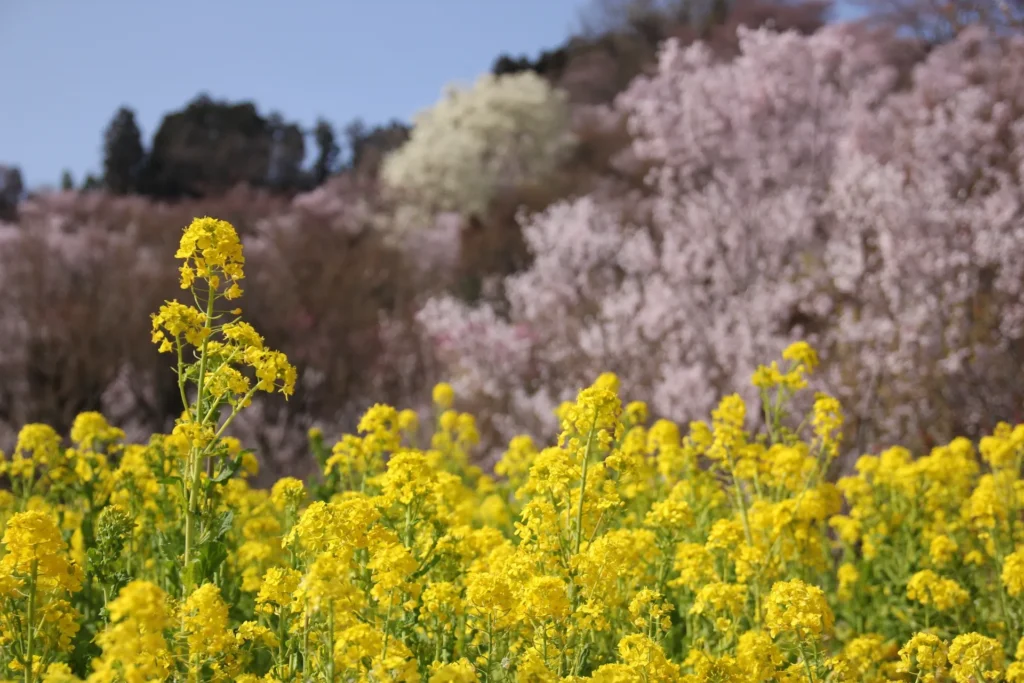
Hanamiyama Park is one of Fukushima’s most picturesque spots, loved by visitors year-round. In spring, around 1,000 cherry trees burst into bloom, creating magical scenes that feel like a dream. Walk through tunnels of blossoms and take in the vibrant pink colors. Peak bloom is usually from early to mid-April, though dates can vary depending on the weather, so check in advance.
In autumn, the park transforms into a canvas of red, orange, and gold. The walking trails offer sweeping views of the changing leaves, especially the vivid red of Japanese maples. A peaceful stroll during this season is truly memorable.
Hanamiyama Park is easy to access by bus from Fukushima Station, followed by a short walk. Facilities like rest areas and clean toilets make it a stress-free destination. You’ll also find nearby cafés and shops selling local treats like ichigo daifuku (strawberry mochi) and Kitakata Ramen—perfect for a tasty break during your visit.
From seasonal nature to delicious snacks, Hanamiyama Park offers a complete local experience not to be missed.
Hanamiyama Park is stunning all year round! In spring, cherry blossoms make it feel like a pink dream, and in autumn, the colorful leaves are amazing.
A Hike Through Nature’s Colors: The Goshikinuma Ponds in Urabandai

The Goshikinuma Ponds, located in the Urabandai area of Fukushima Prefecture, are a stunning natural destination known for their ever-changing colors. The name “Goshikinuma,” meaning “five-colored ponds,” comes from the way the water’s surface shifts in color depending on the season and weather. On sunny days, visitors can marvel at vivid shades of emerald green, cobalt blue, and deep indigo—a magical display that leaves a lasting impression.
The hiking trails around Goshikinuma are well-maintained and cater to all levels, from beginners to seasoned hikers. One of the most recommended routes is the two-hour loop that takes you around the ponds. Along the way, you’ll encounter scenic viewpoints overlooking the lakes, as well as peaceful forest paths that offer a refreshing retreat into nature. The area is especially popular in spring, when new greenery covers the landscape, and in autumn, when vibrant foliage adds dramatic color to the scenery.
While hiking, it’s not uncommon to spot wildlife and a variety of plant life. In spring, colorful wildflowers bloom along the paths, while in autumn, the reflection of fiery red and gold leaves on the water creates a breathtaking scene. These natural encounters make for unforgettable memories.
Around the Goshikinuma area, you’ll also find convenient facilities like rest areas and tourist spots. After your hike, you can relax at nearby cafés offering light meals made with local ingredients. Fresh produce from Urabandai and dishes featuring regional expertises provide the perfect way to recharge after exploring.
Goshikinuma is one of the must-visit highlights of any trip to Fukushima. Whether you’re seeking natural beauty or simply a peaceful walk in the woods, a hike through these vibrant ponds offers a deeply refreshing experience for both body and soul.
Goshikinuma Ponds are stunning! The water changes colors, and the easy hiking trail offers great views and beautiful flowers or autumn leaves. A perfect nature getaway!
Delicious Local Cuisine! Enjoy a Kitakata Ramen Lunch (Bannai Shokudo, Makoto Shokudo, etc.)
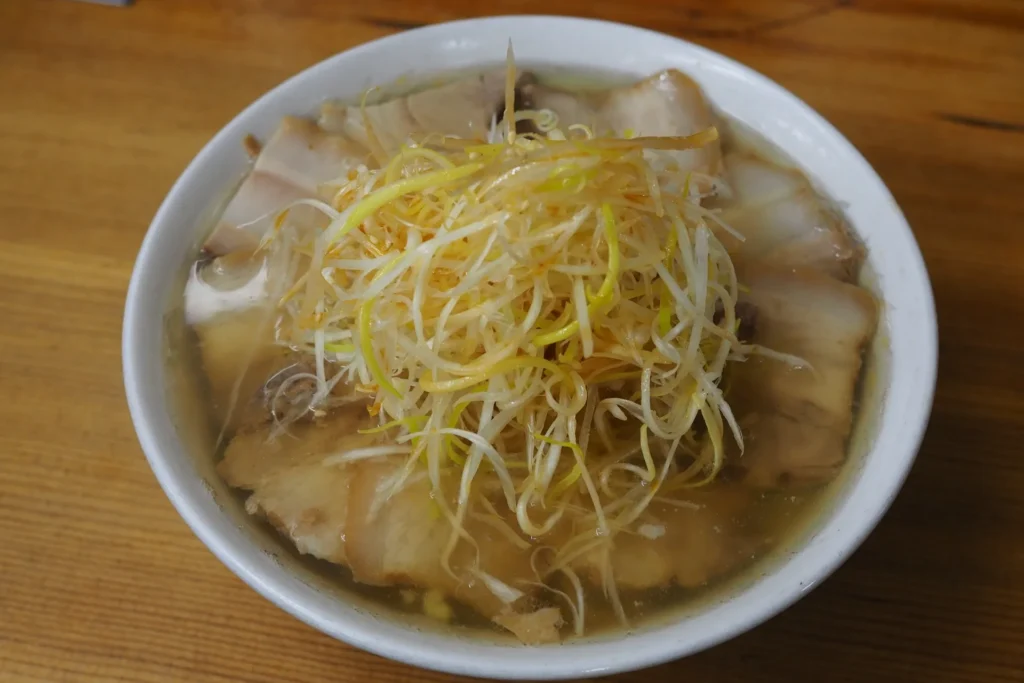
One of the greatest pleasures of traveling in Fukushima is undoubtedly indulging in the local food. Among the regional specialties, Kitakata Ramen stands out as one of the most iconic dishes. Kitakata City is known as a ramen lover’s paradise, home to numerous shops each offering their own unique take on this beloved noodle dish. Here are a couple of must-try ramen spots in the area:
First up is Bannai Shokudo, one of the most famous ramen shops in Kitakata. It’s long been loved by locals and visitors alike. The ramen features a light soy sauce-based broth that is both flavorful and easy to drink. The homemade medium-thick noodles have a delightfully chewy texture and pair perfectly with the broth. Each bowl is topped generously with slices of chashu pork, bamboo shoots, and green onions—beautiful to look at and even better to eat.
Next is Makoto Shokudo, another popular spot highly recommended for its Special Ramen. The soup is rich and deeply flavorful, made by simmering pork bones and chicken for hours. The toppings include tender chashu pork, marinated eggs, and plenty of bean sprouts, making for a hearty and satisfying bowl. This is a great choice for those looking for a more filling ramen experience.
One of the charms of Kitakata Ramen is its diversity. Each shop offers its own unique broth flavor, noodle thickness, and toppings, making it fun to try and compare different styles. Be sure to treat yourself to some local ramen in between sightseeing—after a day of exploring Fukushima’s natural beauty and history, a warm bowl of Kitakata Ramen is the perfect reward.
Since many ramen shops are scattered throughout Kitakata City, it’s easy to stop by while touring the area. Each restaurant has its own personality, making it a must-visit destination for ramen lovers. Even without a car, the area is accessible via public transportation, so feel free to explore with peace of mind. Don’t forget to add a taste of Kitakata Ramen to your Fukushima adventure!
Kitakata Ramen in Fukushima is a must-try—whether you prefer a light, flavorful broth or a rich, hearty one, it’s perfect for any ramen fan!
Where to Stay in Fukushima: Onsen Ryokan or City Hotel?

To make the most of a 2-day trip to Fukushima, choosing the right accommodation is key. The region offers both traditional hot spring ryokans and modern city hotels, each with their own unique appeal. Depending on your travel style and goals, you can find the perfect place to stay.
For those looking to unwind in nature, a hot spring ryokan is an excellent choice. Areas like Higashiyama Onsen and Tsuchiyu Onsen are nestled in peaceful, natural settings and offer a serene atmosphere ideal for relaxation. At these ryokans, you can enjoy delicious meals made with seasonal local ingredients, including exquisite multi-course kaiseki dinners. One of the highlights is soaking in an open-air bath while taking in the beauty of the surrounding seasonal landscapes.
On the other hand, hotels in Fukushima City offer great convenience and easy access to sightseeing spots. Around Fukushima Station, there are plenty of business and city hotels, making it easy to get around and enjoy local dining. Staying near the station helps minimize travel time and maximize your time for sightseeing. Recently, more design-forward hotels and accommodations offering local cultural experiences have also become available, giving travelers even more choices.
When selecting your accommodation, it’s important to consider factors such as the availability of hot springs, meal options, and overall accessibility. If your goal is to relax, a ryokan with an onsen is the way to go. If you plan to focus on sightseeing and want to move around efficiently, a hotel in the city center would be a smart choice.
Both types of lodging have their unique advantages, so choose the one that best suits your travel style and enjoy your journey through Fukushima to the fullest.
Hot spring ryokan = ultimate chill zone with fancy food and nature baths. City hotels = speedy sightseeing HQ.
[Day 2] A Day of Hot Springs, History, and Culture in Fukushima
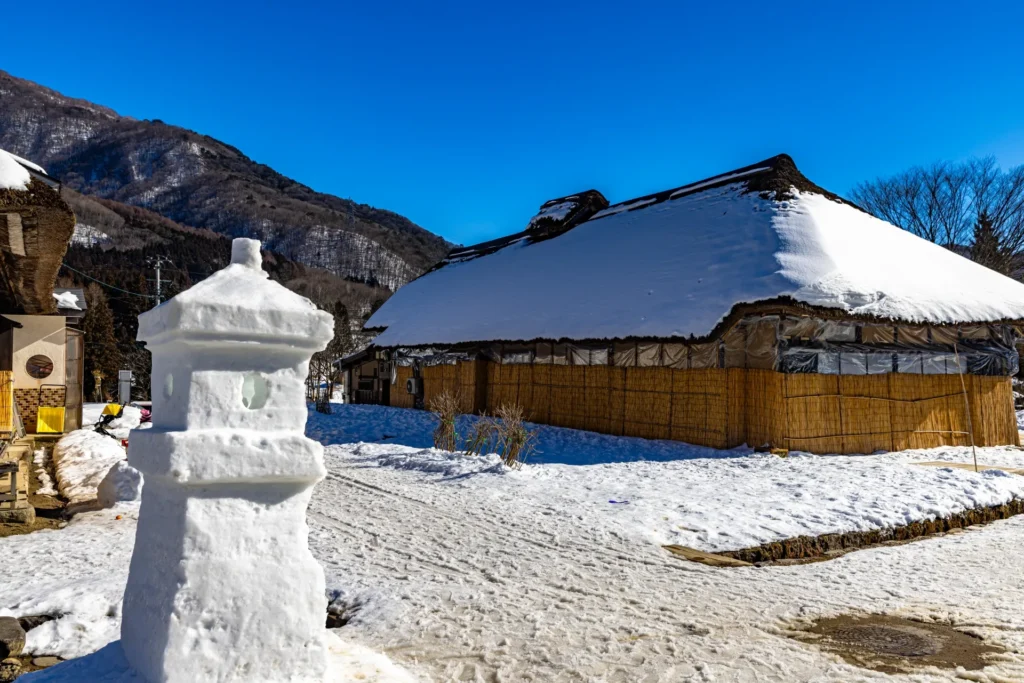
For the second day in Fukushima, the perfect plan includes immersing yourself in hot springs, history, and traditional culture. Start your morning with a stroll through Ōuchi-juku, a former post town from the Edo period. With its charming thatched-roof houses lined up along the road, the area feels like stepping back in time. Be sure to try the local specialty “Negi Soba” a fun and memorable dish where green onion is used as chopsticks—always a hit with visitors.
Next, make your way to Higashiyama Onsen, counted among Japan’s top three hot spring resorts. Many inns here offer day-use hot springs, allowing visitors to unwind while surrounded by stunning natural scenery. Outdoor baths with panoramic views are especially popular—an ideal way to refresh both body and mind.
From there, head to Aizuwakamatsu and visit Tsuruga Castle, a historic landmark rich with the legacy of the Aizu clan. The view from the top of the keep is breathtaking, and the castle’s exhibitions provide a deeper look into the area’s fascinating history.
End the day with a hearty local meal: Aizu’s signature dish, Sauce Katsudon. Known for its generous portions and rich flavor, this dish is a satisfying way to wrap up your trip. Recommended spots include Nakajima and Hakukaku Shokudō, both beloved by locals and known for their perfectly fried cutlets and savory sauce. After a relaxing soak and a delicious meal, your journey through Fukushima will surely become an unforgettable memory.
A Morning Stroll Through History: Thatched-Roof Streets of Ōuchi-juku
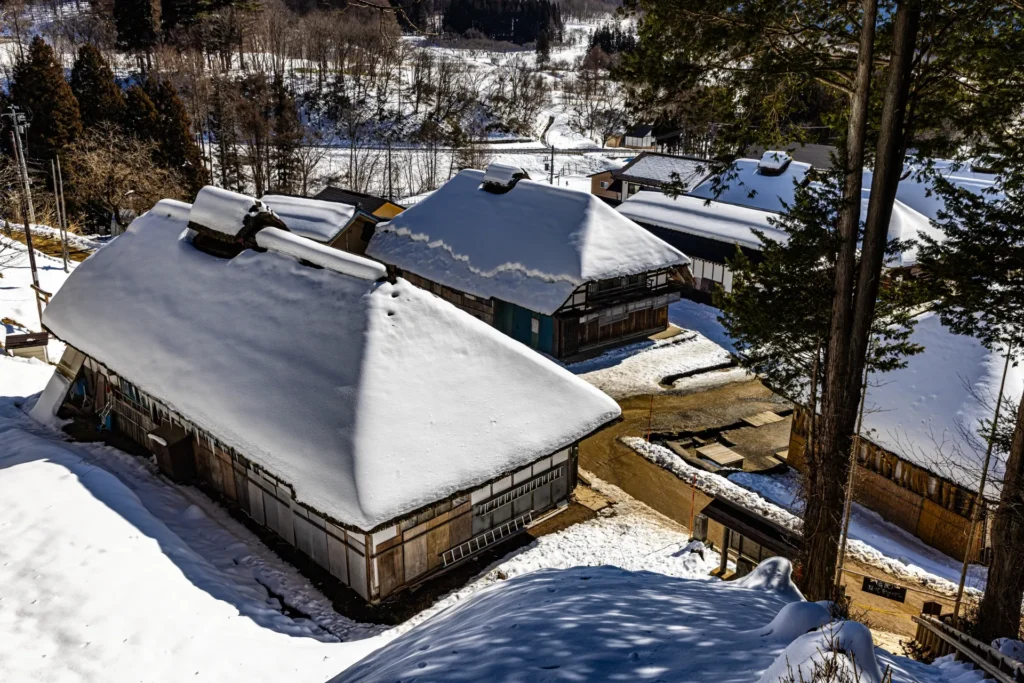
Located in Fukushima Prefecture, Ōuchi-juku retains the nostalgic atmosphere of an Edo-period post town. The thatched-roof houses lining its main street create a truly picturesque scene, making visitors feel as if they’ve stepped into the past. Morning is the best time to visit, when the town is quiet and bathed in soft sunlight, enhancing its serene beauty.
Historically, Ōuchi-juku served as an important stop between Aizu and Shimotsuke. Today, it offers a rare opportunity to experience well-preserved traditional architecture and scenery. The iconic thatched roofs highlight the craftsmanship of the region and tell stories of a bygone era.
While strolling, don’t miss out on trying Negi Soba, a unique way of eating soba noodles using a leek instead of chopsticks—only found here. Enjoying this dish in the fresh morning air adds to the charm of the experience.
Each season brings new scenery to Ōuchi-juku: cherry blossoms in spring, lush greenery in summer, vibrant foliage in autumn, and magical snow-covered landscapes in winter. No matter when you visit, its charm remains timeless.
Accessible even without a car, Ōuchi-juku can be reached easily by public transportation. A bus ride from Fukushima Station takes about an hour. Be sure to plan a peaceful morning walk here—an experience where history and nature beautifully come together.
Ōuchi-juku feels like stepping back in time—peaceful mornings, charming roofs, and quirky Negi Soba make it a must-visit!
Day-Use Soaks at One of Japan’s Top Hot Springs: Higashiyama Onsen

Fukushima’s Higashiyama Onsen, near Aizuwakamatsu, is one of Japan’s top three onsen resorts. Surrounded by lush nature and home to many historic inns, it’s a soothing retreat for travelers. Its biggest draws are the spectacular views and high-quality, healing waters.
With many inns offering day-use hot spring access, it’s easy to stop by in between sightseeing. The natural hot spring water is gentle on the skin and helps melt away fatigue. Soaking in an open-air bath while gazing out at the surrounding nature is a truly rejuvenating experience. Since the scenery changes with the seasons, each visit brings something new to enjoy.
The onsen town also features restaurants serving meals made from local ingredients. Don’t miss specialties like Aizu’s Sauce Katsudon and basashi (horse sashimi)—both must-tries after your bath.
Higashiyama Onsen is also well-located for exploring local attractions like Tsuruga Castle and Ōuchi-juku. Plan some time here to relax and recharge as part of your trip through Fukushima’s natural beauty and cultural heritage.
great hot springs, stunning views, and delicious local food. Ideal for relaxing during your Fukushima trip!
Discover the History of Aizuwakamatsu: A Visit to Tsuruga Castle
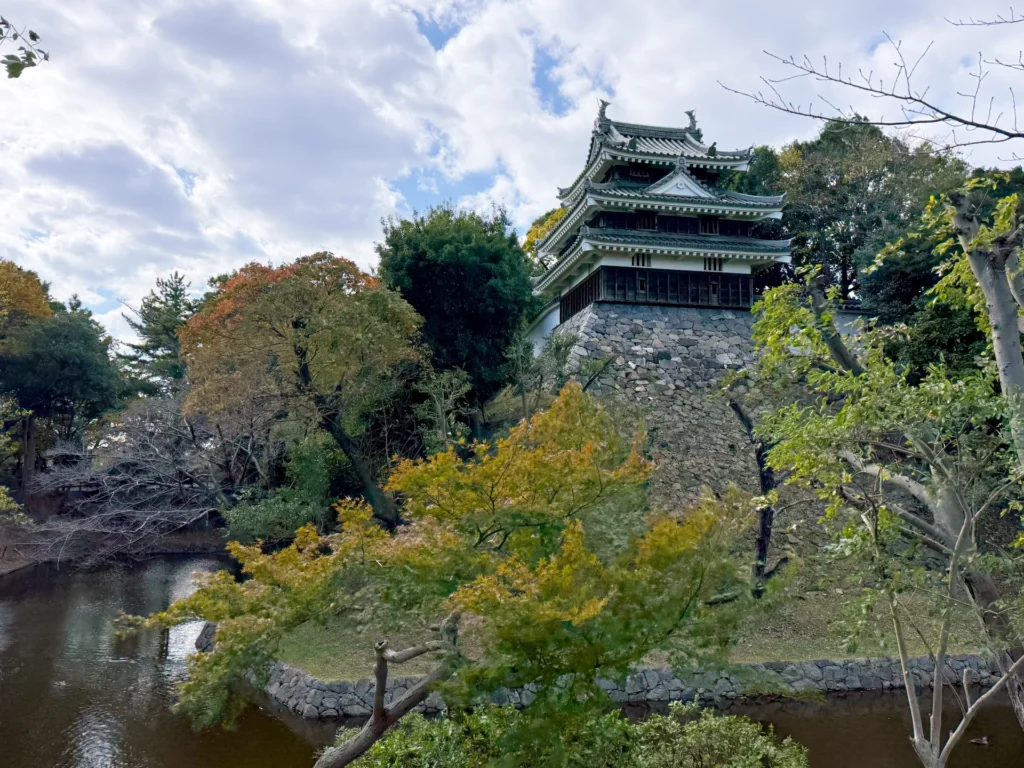
Tsuruga Castle is the pride of Aizuwakamatsu and a must-visit for history lovers. Built during the Edo period and known for its role in the Boshin War, the castle is filled with stories of samurai valor and resilience. Inside, detailed exhibits provide a vivid picture of the lives and struggles of Aizu’s warriors.
The castle’s striking appearance—white walls and a red-tiled roof—is particularly beautiful when paired with seasonal scenery. In spring, cherry blossoms create a fairytale-like scene. In autumn, fiery leaves frame the castle in stunning color.
After touring the interior, climb to the top of the keep for a panoramic view of the city and surrounding mountains. On clear days, the view is breathtaking. Informative displays and videos inside the keep deepen your understanding of Tsuruga Castle’s historical significance.
The area around the castle is also rich in cultural experiences. Nearby attractions include the Aizuwakamatsu City Historical Museum and the Aizu Traditional Crafts Museum, where you can learn about local heritage and craftsmanship.
Take time to appreciate the historical layers of the region as you stroll through the area. A visit to Tsuruga Castle is a highlight of any trip to Fukushima and offers a powerful connection to the past.
Tsuruga Castle is a historic samurai castle in Fukushima with great views and beautiful seasonal scenery.
End on a High Note: Enjoy Aizu’s Famous Sauce Katsudon (Recommended: Nakajima, Hakukaku Shokudō)
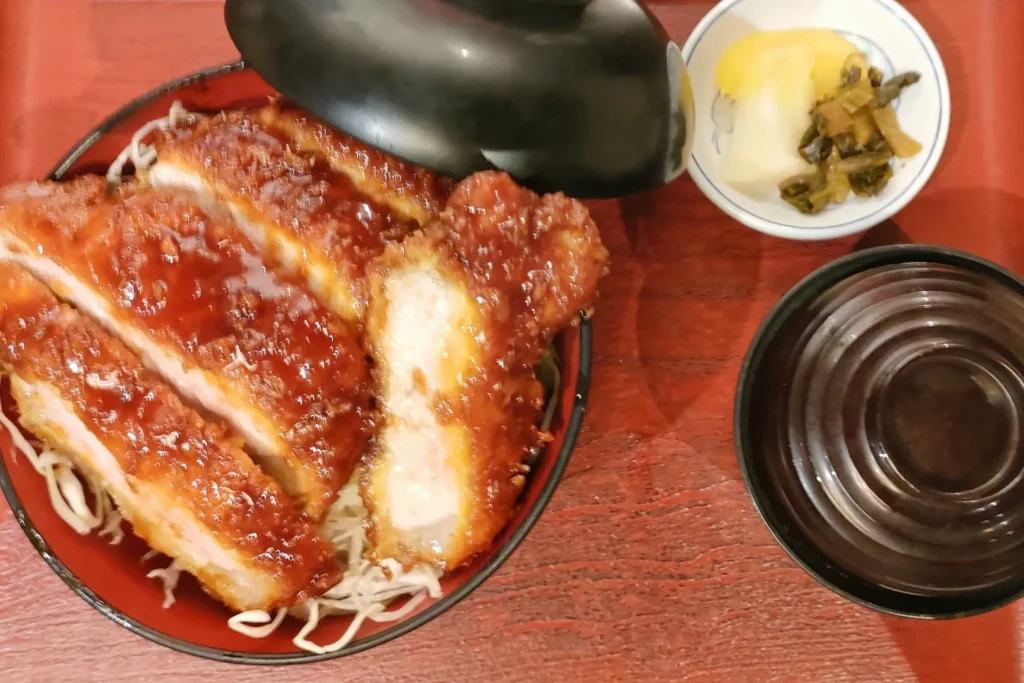
Wrap up your Fukushima adventure with a taste of Aizu’s signature dish: Sauce Katsudon. This beloved comfort food features crispy, juicy pork cutlet atop a bed of rice, drenched in a rich, savory sauce. It’s hearty, flavorful, and incredibly satisfying.
Top picks for trying this dish include Nakajima, a long-standing local favorite known for its thick cutlets and perfectly balanced sauce. The freshly fried pork delivers the ultimate crunch, and the generous portions are sure to leave you full.
Another great option is Hakukaku Shokudō, a cozy, welcoming spot popular with visitors. Their sauce katsudon is deeply flavorful, with the sauce soaking into every bite of the cutlet. Both restaurants use locally sourced ingredients, making the meal not only delicious but reassuringly wholesome.
If you have some space on your stomach after your katsudon, treat yourself to a local dessert. Try kozuyu, a traditional Aizu soup served in celebrations, or enjoy seasonal fruit parfaits made with local produce—visually delightful and the perfect way to end your journey.
Savoring regional cuisine is one of the great pleasures of travel. As you enjoy your katsudon, take a moment to reflect on your time in Fukushima and the memories you’ve made. With so much to offer, this is a place worth revisiting—and every trip reveals something new.
crispy pork cutlet with savory sauce that hits all the right spots. Don’t forget to try a local dessert too! Delicious and unforgettable.
Tips for Making the Most of Your Trip to Fukushima
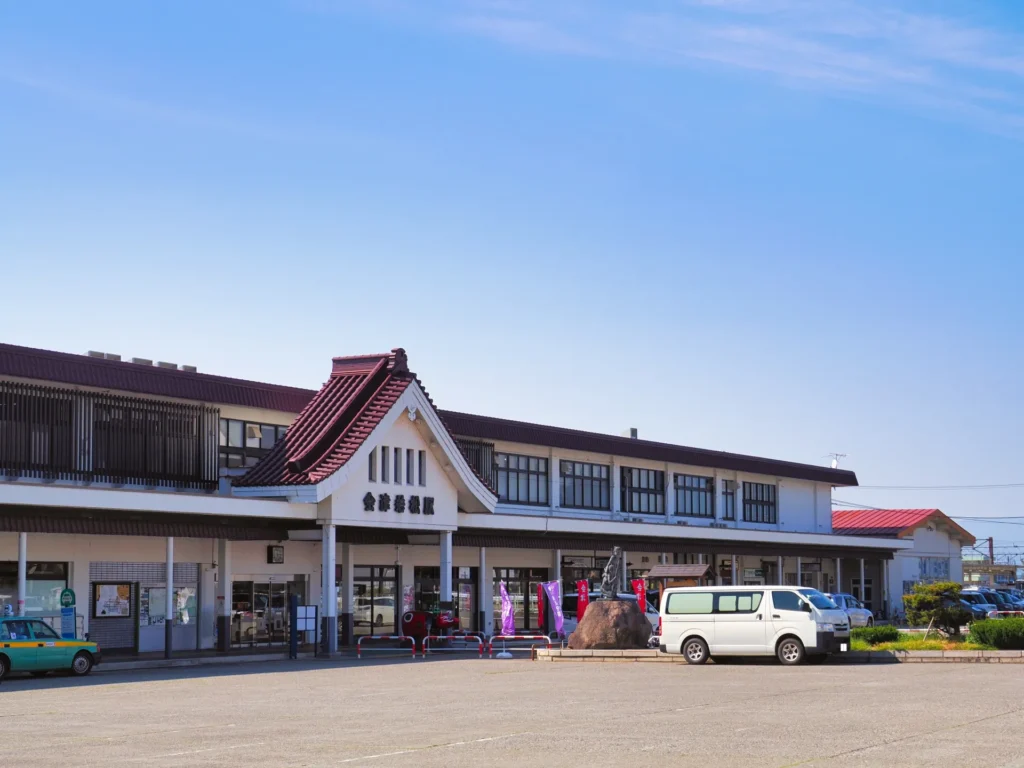
Planning a trip to Fukushima? A few smart travel tips can help you make the most of your experience. First off, if you’re using public transport, the JR East Pass is highly recommended. It makes traveling between key destinations in Fukushima smoother and more cost-effective—especially in areas with frequent train and bus service.
Before your trip, check out travel apps and websites for the latest information. They’ll help you stay updated on opening hours, events, and how busy certain spots might be. Many also offer local food recommendations, so finding great places to eat gets a lot easier.
Fukushima’s landscapes change beautifully with the seasons. Spring brings cherry blossoms to Hanamiyama Park, and in fall, the autumn foliage is stunning. Planning your trip around the seasonal highlights adds another layer of enjoyment.
Connecting with locals is also a great way to discover hidden gems. Ask around for local favorites—sometimes the best spots aren’t in guidebooks. Keep these tips in mind and you’ll have a more memorable Fukushima adventure.
Getting Around Without a Car: Make the Most of the JR East Pass
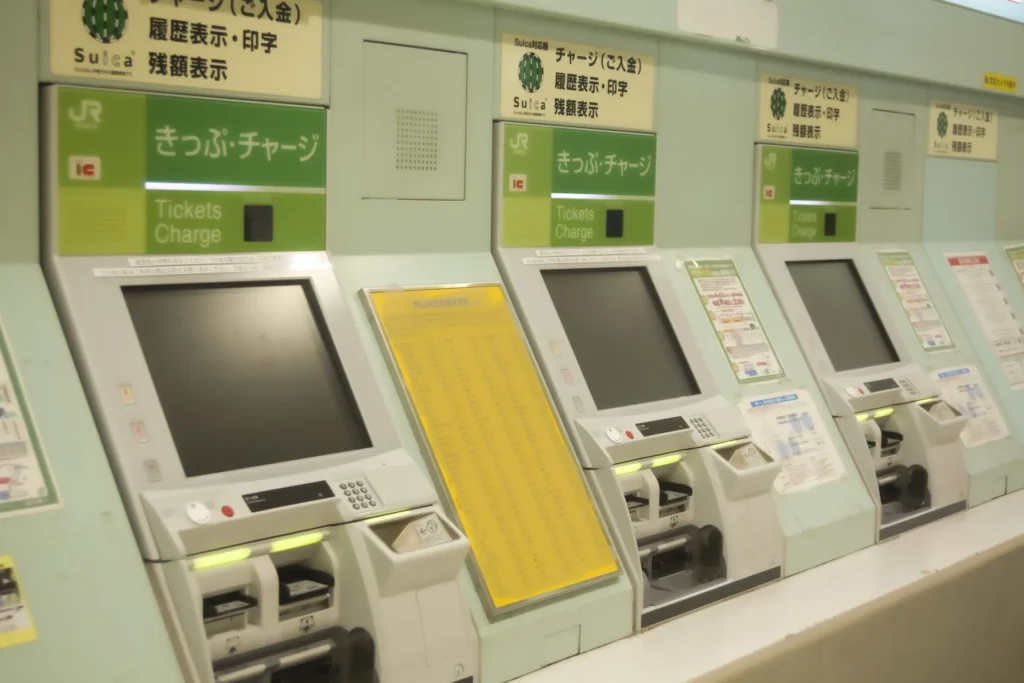
To explore Fukushima without a car, smart use of public transportation is key—and nothing beats the convenience of the JR East Pass. It not only gives you access to major sightseeing spots across the region, but also helps you save on transportation costs.
Among the various options, the “JR East Pass” and “Fukushima–Niigata Pass” are especially useful for tourists. These passes let you travel easily between popular spots like Fukushima Station, Aizu-Wakamatsu, Urabandai, and Kitakata. For example, a limited express train from Fukushima Station to Aizu-Wakamatsu takes just about 90 minutes—comfortable, scenic, and hassle-free.
Many passes include unlimited rides on buses and local lines too, which makes it easier to get between attractions. You can even catch a direct bus to Goshikinuma (the Five Colored Lakes), enjoying beautiful views along the way. With access to local shuttle buses also included, sightseeing becomes much more efficient.
It’s a good idea to check your planned route ahead of time—especially during peak travel seasons, when reservations and advance planning can save time. Make sure to double-check the pass’s validity and the lines it covers so you can explore smoothly without any hiccups.
Using the JR East Pass is one of the easiest ways to enjoy the best of Fukushima without driving. Up next, we’ll dive into specific destinations and transit options to help you build your perfect itinerary.
Before You Go: Handy Travel Apps and Websites
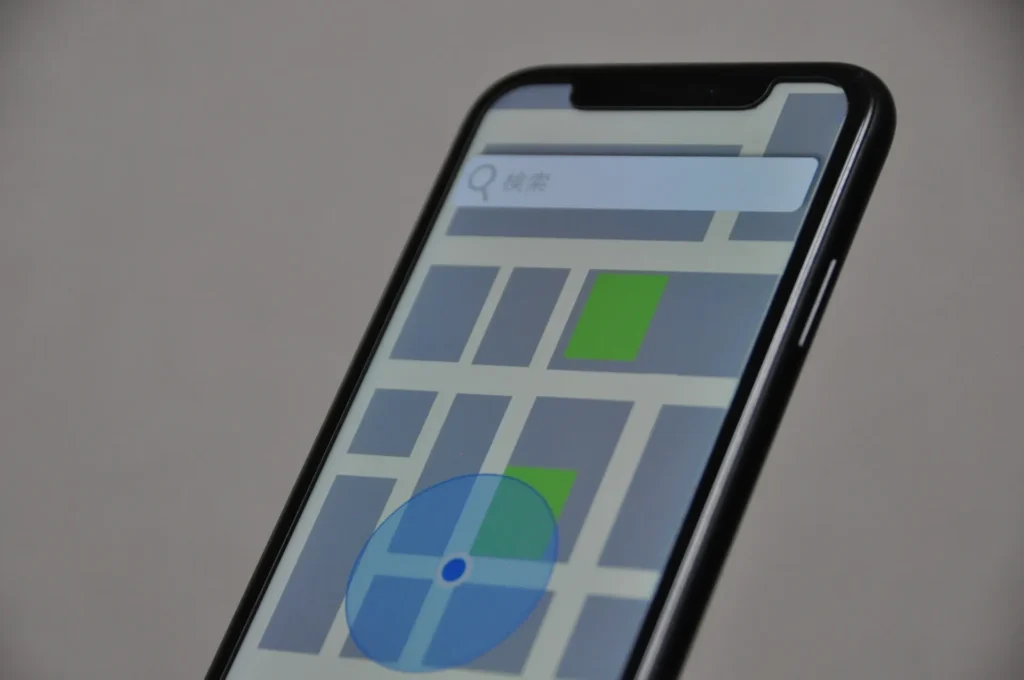
To have a smooth and fulfilling trip in Fukushima, take advantage of helpful apps and websites before you go. Here are some top picks:
Start with the official Fukushima Tourism Website, which is packed with detailed information on sightseeing spots, events, and local food. It also features seasonal recommendations and area-specific guides—perfect for trip planning.
Google Maps is essential for navigating routes and checking transit schedules. You can also read reviews of nearby restaurants and attractions, helping you decide where to go on the fly.
Tabelog and Gurunavi are great for finding good eats. Whether you’re after famous local dishes like Kitakata ramen or sauce katsu-don, checking reviews ahead of time can help you avoid any disappointments.
Many areas also offer official tourism apps. For example, Aizu-Wakamatsu’s app includes detailed info on historical spots like Tsurugajo Castle and Ouchijuku, and even offers audio guides so you can dive deeper into local history.
Finally, don’t underestimate the power of social media. Try searching hashtags like #福島観光 or #福島グルメ on Instagram or Twitter to find real traveler experiences and hidden gems. It’s one of the best ways to get up-to-date and personal tips.
By using these apps and websites, you can unlock the full potential of your trip. A little prep goes a long way!
Summary: A 2-Day Fukushima Trip You Can Fully Enjoy Without a Car

Fukushima is full of amazing places that can be enjoyed without a car. This 2-day sample itinerary shows how you can explore its charm using only public transport.
Start from Fukushima Station. On Day 1, visit historical and cultural sites like Fukushima Inari Shrine and the Koseki Yuji Memorial Hall. Then head to Hanamiyama Park, a spot that showcases nature’s beauty in every season. Afterward, take a hike through the mystical Goshikinuma lakes in the Urabandai area. For lunch, try Kitakata ramen—one of Fukushima’s culinary icons. Unwind for the night at a hot spring inn or a comfortable hotel in the city.
On Day 2, explore Ouchijuku, a picturesque old post town with thatched-roof buildings. Then soak in the historic ambiance of Higashiyama Onsen—one of Japan’s top three traditional hot spring resorts. Finally, visit Tsurugajo Castle in Aizu-Wakamatsu to dive into samurai history. Round off your trip with a hearty local meal of sauce katsu-don.
Even without a car, Fukushima offers a rich mix of culture, nature, and food—all accessible by train or bus. Plan your route ahead of time and double-check opening hours and transport options for a smoother experience. With thoughtful planning, this trip can become one to remember.
How to Travel Efficiently: Route Planning Tips

To get the most out of your car-free trip, efficient route planning is a must. The model itinerary we introduced uses Fukushima Station as a starting point and makes good use of trains, buses, and taxis to connect major sights.
On Day 1, start with Fukushima Inari Shrine and the Koseki Yuji Memorial Hall—both within a 15-minute walk of the station. Then hop on a bus to Hanamiyama Park for a dose of seasonal beauty, especially during cherry blossom or autumn foliage seasons. Next, catch a bus to the Goshikinuma Lakes in Urabandai for a scenic hike.
For lunch, stop by Kitakata for ramen. Local favorites like Bannai Shokudo and Makoto Shokudo are easily reachable by bus. After lunch, head to your accommodation. Whether you stay at a hot spring inn or a city hotel, many offer convenient access to nearby attractions.
On Day 2, we recommend exploring Ouchijuku. The historic post town, with its preserved Edo-period look, is a unique experience. Then relax in the healing waters of Higashiyama Onsen before visiting Tsurugajo Castle to soak up some samurai-era history. Don’t forget to finish your trip with a meal of sauce katsu-don—a perfect send-off.
To enjoy all of this without stress, check transport timetables ahead of time and leave wiggle room in your schedule. That way, you can travel at your own pace while making the most of each destination.
Packing & Prep: What to Bring and What to Know

Good preparation goes a long way when traveling without a car. Here are some key items and tips to keep your trip smooth and comfortable:
- A lightweight backpack or tote bag: Easy to carry and perfect for keeping essentials handy while sightseeing.
- Season-appropriate clothing: Spring and fall temperatures can swing quickly, so layers are your friend.
- A portable charger: You’ll rely heavily on your phone for maps and info—make sure it doesn’t run out of juice.
- A transit IC card: Prepaid cards like Suica or PASMO make getting on and off trains and buses a breeze.
Also, be mindful of timing. Some places get crowded, so visiting popular spots early in the day helps you avoid the rush. Check public transit schedules in advance to avoid surprises.
If you’re exploring nature, wear comfortable walking shoes. Paths around places like Goshikinuma or Hanamiyama can be uneven, so sturdy footwear is a must.
Finally, don’t be shy—chat with the locals! People in Fukushima are warm and welcoming, and you might discover off-the-beaten-path spots or delicious local eats through casual conversations. These moments can make your trip even more memorable.
With a bit of planning and the right gear, you can have an unforgettable time in Fukushima—no car required!

